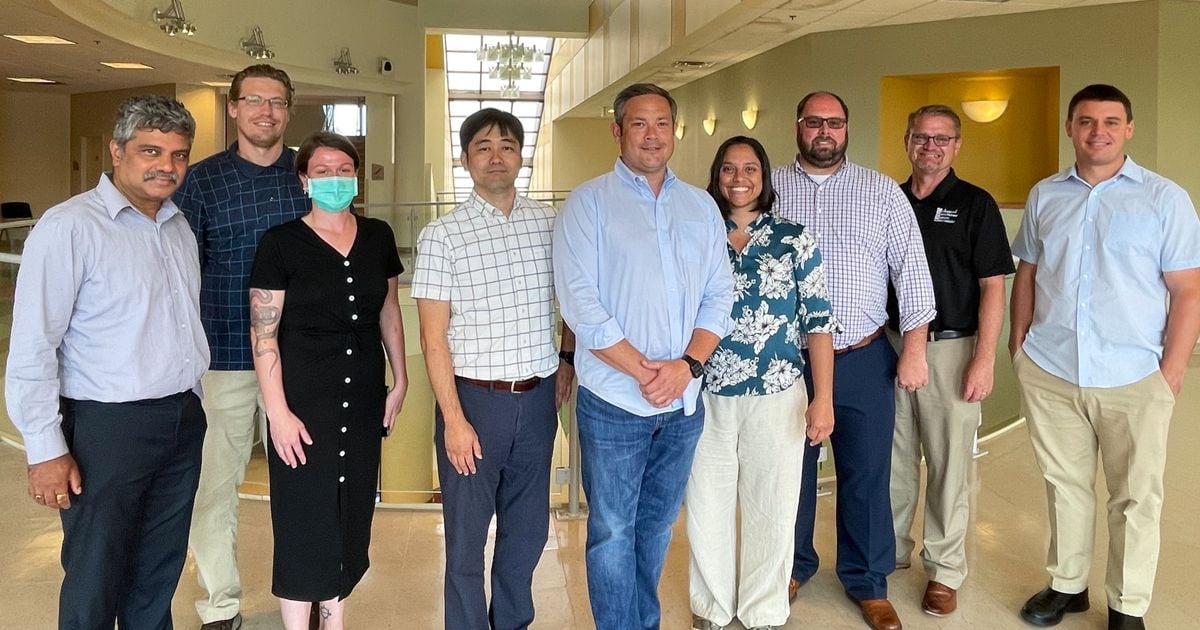Central State researchers lead $10 million sustainable ag project
Central State researchers lead $10 million sustainable ag project Springfield News Sun


Researchers at Central State University Lead $10 Million USDA-Funded Sustainable Agriculture Systems Project

Researchers at Central State University are leading a $10 million USDA-funded sustainable agriculture systems project.
The five-year Sustainable Use of a Safe Hemp Ingredient (SUSHI) project involves aquaculture, also known as aquafarming, the controlled production of aquatic organisms such as fish or algae.
The Sustainable Development Goals (SDGs)
- Goal 2: Zero Hunger
- Goal 8: Decent Work and Economic Growth
- Goal 12: Responsible Consumption and Production
- Goal 14: Life Below Water
- Goal 17: Partnerships for the Goals
The SUSHI effort will investigate the use of hemp as an aquaculture feed, train aquaculture producers, and increase the production of healthy fish in the Menominee Nation.
Starting in late 2021, the director of the project has been Brandy Phipps, assistant professor in the Department of Agricultural and Life Sciences and researcher in the food, nutrition, and health project of the Agriculture Research and Development program.
One of Phipps’ goals is to leverage SUSHI as a means to help bolster diversity in the agriculture workforce, “which has historically been lacking.”
“Projects such as SUSHI, Phipps strongly believes, can aid in alleviating such crucial statistical gaps by collaborating with communities — particularly members of the underserved and underrepresented — to generate substantial agricultural development and outreach programs that will ultimately lead not only to further workforce equity but independent community food sovereignty, as well,” university officials said.
Explore
Mercy Health introduces new stroke detection technology in Springfield
The partnerships for the project include College of Menominee Nation, University of Delaware, Kentucky State University, University of Kentucky, and Mississippi State University.
Phipps says agriculture is a food system and those working within the field are “dealing with people,” such as those on the production side and the consumption side, and “there are factors for both to be productive, healthy and economically secure.”
The SUSHI team is not only figuring out how to feed people now but also how to feed generations to come economically, environmentally, and equitably.
Craig Schluttenhofer, research assistant professor of Natural Sciences, said he began working with Phipps in 2019 when she first introduced herself and they talked about the benefits of hemp and starting the SUSHI project.
Explore
Springfield world champion softball team celebrates 50th anniversary
For the project, Schluttenhofer directs research on campus, which includes working with a lot of CSU Marauders in the lab, and specializes in plant physiology.
“When people hear ‘hemp,’ they automatically think of the high-THC cannabis that could be intoxicating. But by definition, hemp has to have low levels of THC. The federal limit for hemp is 0.3% THC. We see a lot of potential for hemp, which historically has been used for its grain and for its fiber,” he said.
Phipps initially wrote the grant that’s been funding the project through the USDA, and the National Institute of Food and Agriculture (NIFA) also provides funding for this project.
With funding from the SUSHI grant, there are several projects being worked on, many that involve, employ, and pay students. The projects are tailored toward Central State due to the “extensive and diverse backgrounds” of Phipps, Schluttenhofer, and their cohorts, which include health and nutrition (Phipps), hemp production (Schluttenhofer), and fish expertise and water health via Kumar Nedunuri, professor of Water Resources and Environmental Engineering.
A goal, Schluttenhofer said, is to “find new methods, as with hemp cultivation, to help community members in largely land-locked areas like ours to develop new methods of producing their own fish independent of coastal ocean-based fishing.”
He added: “Realistically sustainable long-term fishing in the oceans is being depleted rapidly for various reasons involving those that are both economic and environmental, which is why we want to develop such markets in places elsewhere like where we are.”
SDGs, Targets, and Indicators
| SDGs | Targets | Indicators |
|---|---|---|
| SDG 2: Zero Hunger | 2.4 By 2030, ensure sustainable food production systems and implement resilient agricultural practices that increase productivity and production, that help maintain ecosystems, that strengthen capacity for adaptation to climate change, extreme weather, drought, flooding and other disasters and that progressively improve land and soil quality | The use of hemp as an aquaculture feed to increase the production of healthy fish |
| SDG 8: Decent Work and Economic Growth | 8.5 By 2030, achieve full and productive employment and decent work for all women and men, including for young people and persons with disabilities, and equal pay for work of equal value | Increasing diversity in the agriculture workforce through projects like SUSHI |
| SDG 14: Life Below Water | 14.4 By 2020, effectively regulate harvesting and end overfishing, illegal, unreported and unregulated fishing and destructive fishing practices and implement science-based management plans, in order to restore fish stocks in the shortest time feasible, at least to levels that can produce maximum sustainable yield as determined by their biological characteristics | Developing new methods of producing fish independent of coastal ocean-based fishing |
1. Which SDGs are addressed or connected to the issues highlighted in the article?
- SDG 2: Zero Hunger
- SDG 8: Decent Work and Economic Growth
- SDG 14: Life Below Water
2. What specific targets under those SDGs can be identified based on the article’s content?
- Target 2.4: By 2030, ensure sustainable food production systems and implement resilient agricultural practices that increase productivity and production, that help maintain ecosystems, that strengthen capacity for adaptation to climate change, extreme weather, drought, flooding and other disasters and that progressively improve land and soil quality.
- Target 8.5: By 2030, achieve full and productive employment and decent work for all women and men, including for young people and persons with disabilities, and equal pay for work of equal value.
- Target 14.4: By 2020, effectively regulate harvesting and end overfishing, illegal, unreported and unregulated fishing and destructive fishing practices and implement science-based management plans, in order to restore fish stocks in the shortest time feasible, at least to levels that can produce maximum sustainable yield as determined by their biological characteristics.
3. Are there any indicators mentioned or implied in the article that can be used to measure progress towards the identified targets?
- The use of hemp as an aquaculture feed to increase the production of healthy fish can be an indicator of progress towards Target 2.4.
- Increasing diversity in the agriculture workforce through projects like SUSHI can be an indicator of progress towards Target 8.5.
- Developing new methods of producing fish independent of coastal ocean-based fishing can be an indicator of progress towards Target 14.4.
Behold! This splendid article springs forth from the wellspring of knowledge, shaped by a wondrous proprietary AI technology that delved into a vast ocean of data, illuminating the path towards the Sustainable Development Goals. Remember that all rights are reserved by SDG Investors LLC, empowering us to champion progress together.
Source: springfieldnewssun.com

Join us, as fellow seekers of change, on a transformative journey at https://sdgtalks.ai/welcome, where you can become a member and actively contribute to shaping a brighter future.







